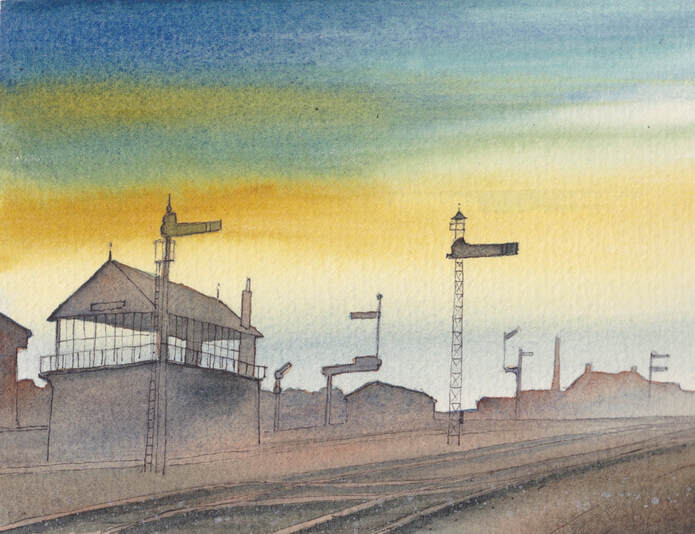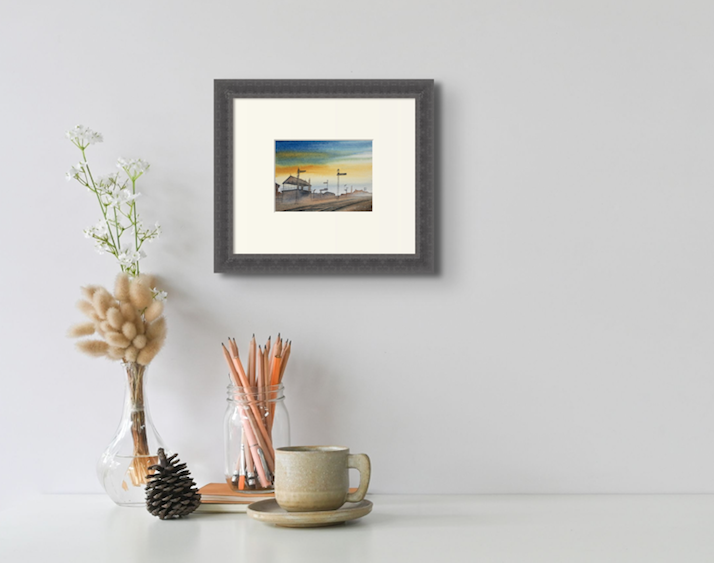The Signal Box by Ian Scott Massie
Original Watercolour
12" x 10" Mounted size - 5" x 7" Image size
SOLD
12" x 10" Mounted size - 5" x 7" Image size
SOLD
THE ARSENAL
I’ve always been a looker-out of windows, especially on city trains: an overgrown back garden here, a derelict goods yard there, buses on a busy street and, just north of Kings Cross, a football stadium with a long history.
In 1512 a naval shipyard was established by Henry VIII at Woolwich, East London, to build what would be the largest ship of its time. Henri Grace a Dieu was 50m long, weighing in at around 1,500 tons with a crew of 1,000 sailors - the ultimate heavy cruiser of the 16th century. Shipbuilding at Woolwich was soon joined by rope making and, later, weapons testing, gun repair and gunpowder manufacture. By the 17th century the Royal Arsenal was the country’s leading weapons centre.
As football’s popularity grew a lot of teams were formed in factories and, in 1886, Woolwich Arsenal became one of them. In five years they turned professional and, in 1904, won promotion to the First Division. After some money troubles they were bought up by Sir Henry Norris, who’d made a fortune building houses in Fulham. He moved the team to Highbury in North London.
Their new home was the former playing field of St John’s College of Divinity. It came with the condition that they couldn’t sell alcoholic liquor, or play on Christmas Day or Good Friday, but the restrictions were dropped within a year. In time the ground was extended with a new stadium built in 1913. This was succeeded by a1930s art deco stadium, part of the facade of which still survives.
For many years you could watch the “Gunner’s” ground slip past the train window but then a new building appeared in 2006. Emirates Stadium is a bold statement of modernity and its opulence reflects the enormous sums of money invested in, and flowing from, the modern game. However the links with the past remain and, among the coloured seats of the stadium, a group of white seats form an easy-to-read outline of a cannon, recalling the club’s origins in the ordnance factories of Woolwich.





